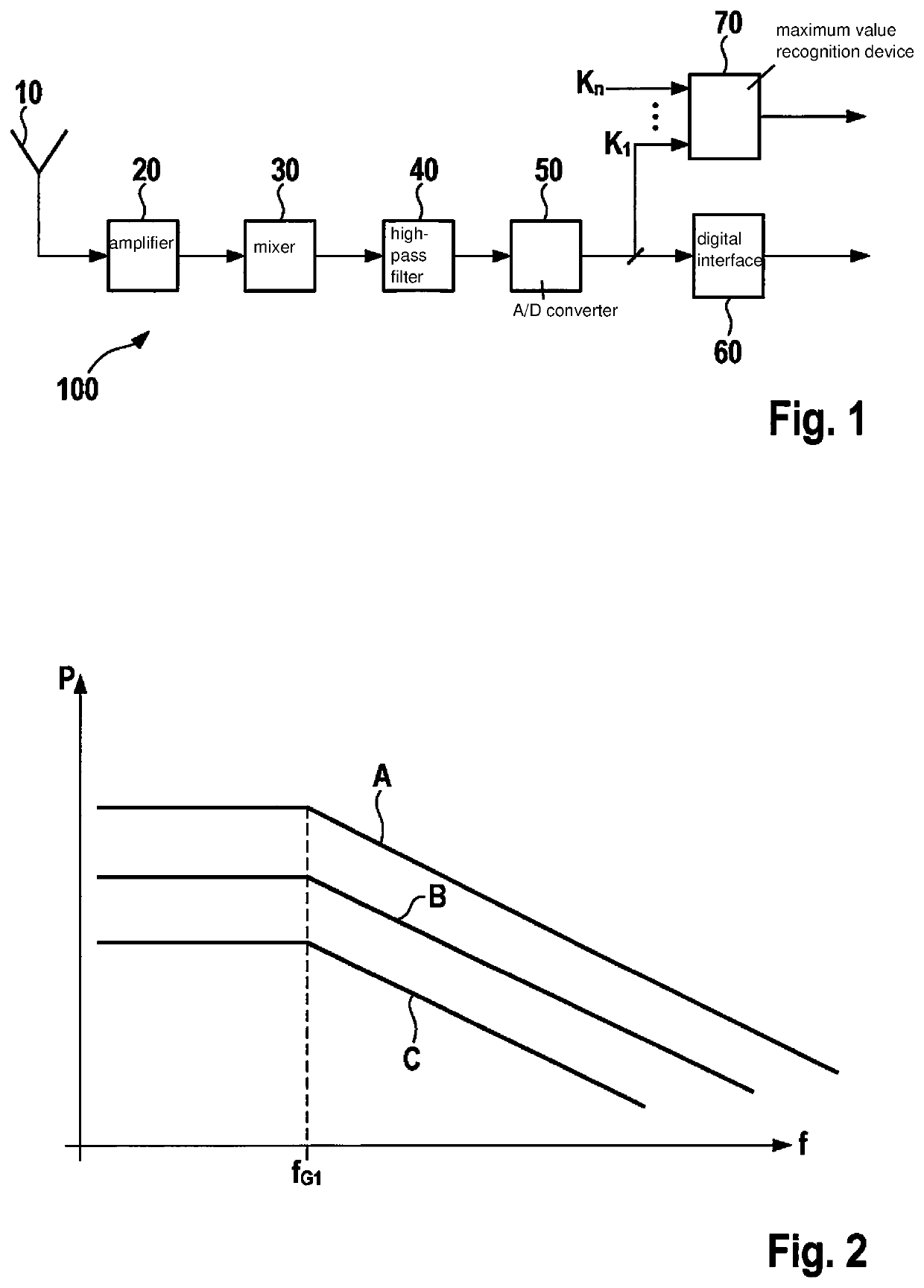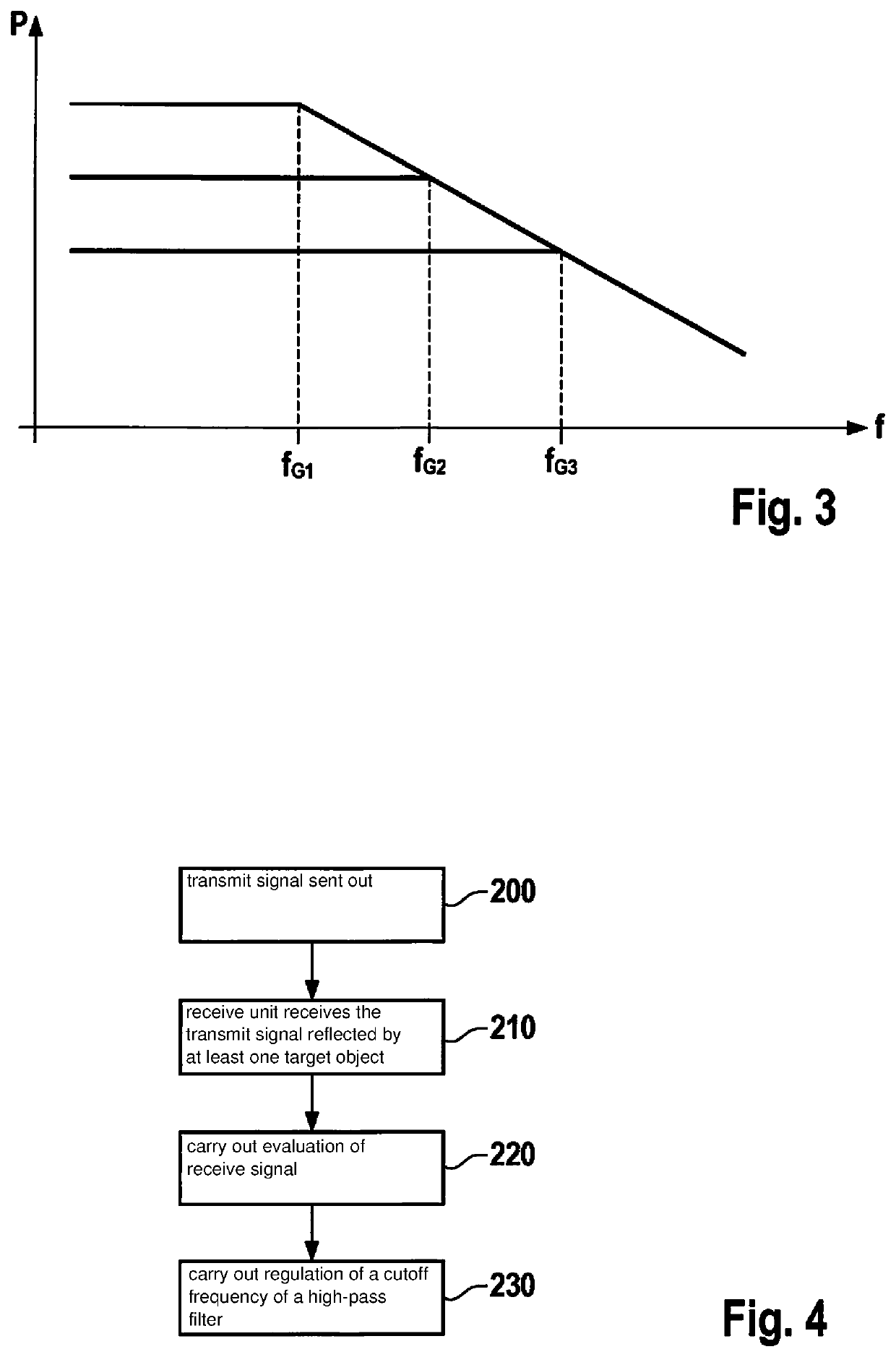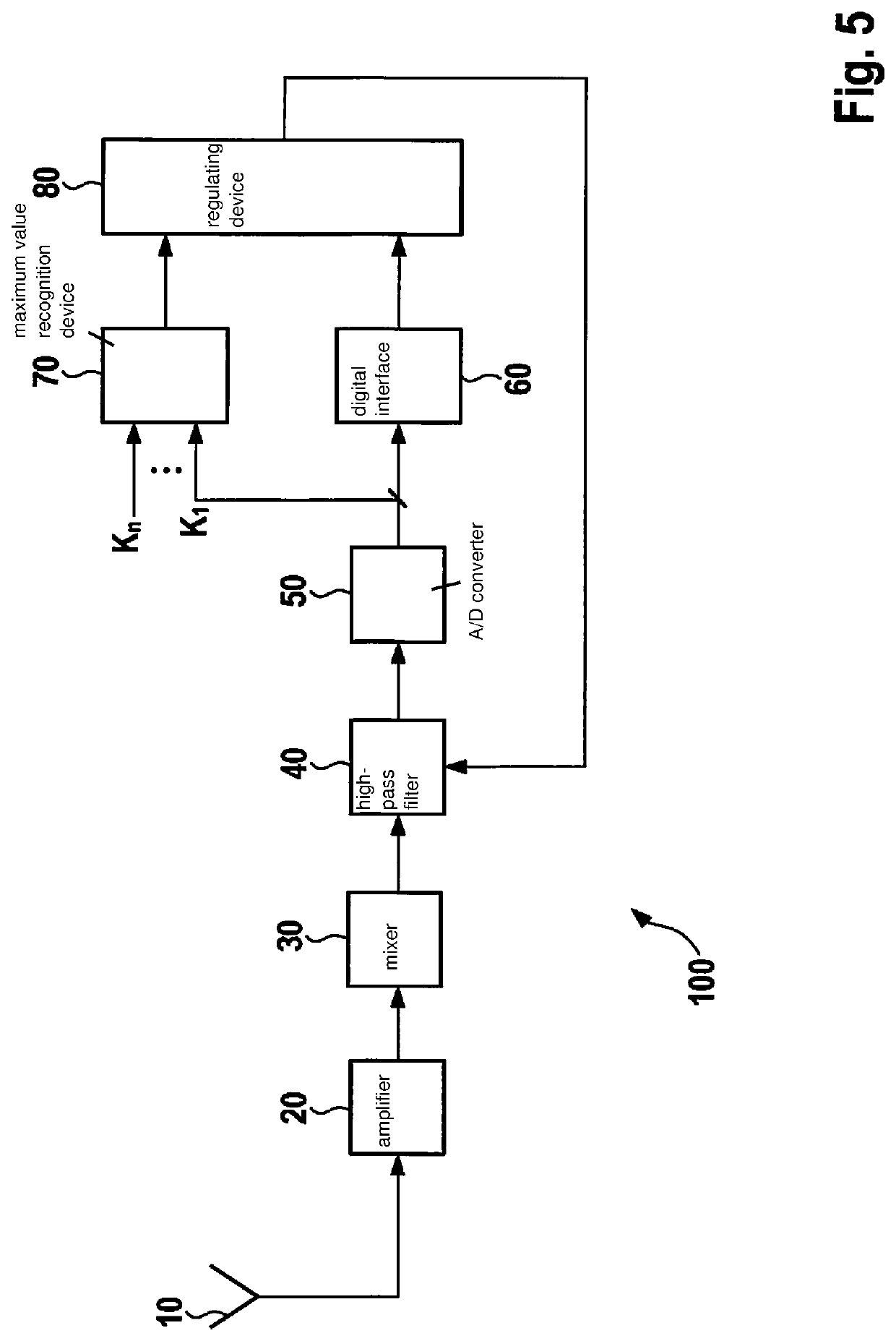Device for operating a radar device
a radar and sensor technology, applied in the direction of measurement devices, using reradiation, instruments, etc., can solve the problems of enlargement of the chip surface, high demands on the usable dynamic range of the receiver, and the limited dynamic range of the overall system, so as to achieve efficient protection and minimize the effect of the effect of the effect of the effect of the effect of the effect of the surface area
- Summary
- Abstract
- Description
- Claims
- Application Information
AI Technical Summary
Benefits of technology
Problems solved by technology
Method used
Image
Examples
Embodiment Construction
[0035]In accordance with the present invention, a cutoff frequency of a high-pass filter is adapted to receive signals in such a way that both strong near targets and weak remote targets can be detected well.
[0036]For this purpose, instead of regulating a gain level of a receive chain or a transmit power, a cutoff frequency of a high-pass filter used for a dynamic compression is regulated. If the receiver is designed in such a way that the cutoff frequency of the high-pass filter is within the usable frequency range, then by displacing the cutoff frequency upward a reduction of the receive level for near targets can be brought about, while remote targets are essentially not impaired. Because the level in the near range is very high even for small targets, but such targets often disappear in the noise in the far range, this proposed method can produce a performance advantage of the radar sensor.
[0037]FIG. 1 schematically shows a diagram of a receive unit 100 of a radar sensor. Receiv...
PUM
 Login to View More
Login to View More Abstract
Description
Claims
Application Information
 Login to View More
Login to View More - R&D
- Intellectual Property
- Life Sciences
- Materials
- Tech Scout
- Unparalleled Data Quality
- Higher Quality Content
- 60% Fewer Hallucinations
Browse by: Latest US Patents, China's latest patents, Technical Efficacy Thesaurus, Application Domain, Technology Topic, Popular Technical Reports.
© 2025 PatSnap. All rights reserved.Legal|Privacy policy|Modern Slavery Act Transparency Statement|Sitemap|About US| Contact US: help@patsnap.com



